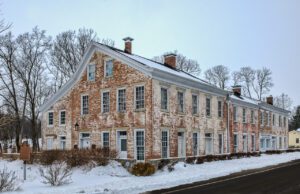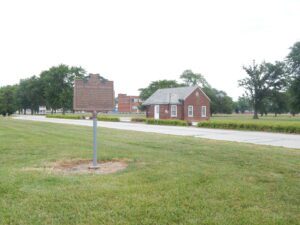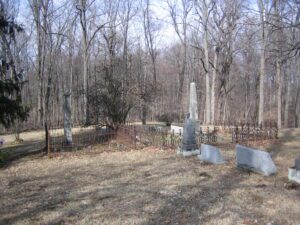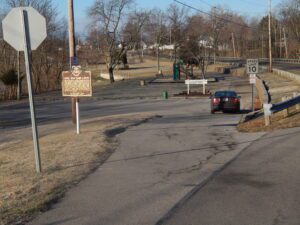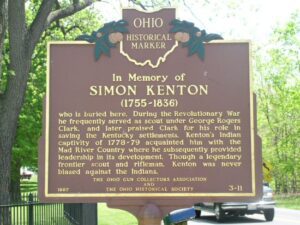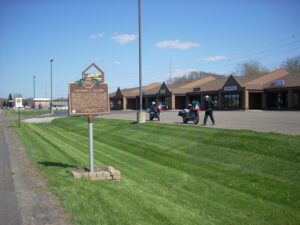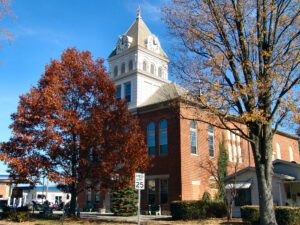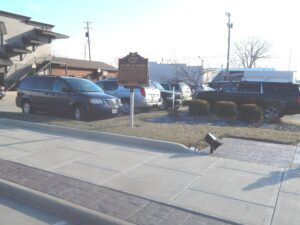, OH
The Bunker Hill House, previously the Bunker Hill Tavern, was built in stages between 1834 and 1862. The building is one of Ohio’s best representations of Federal-Greek Revival style “pike town” architecture. This architectural style is closely associated with pre-Civil War horse-powered turnpike transportation and lodging. The building was a way station for pioneers heading west and for drovers driving their animals to Cincinnati stockyards. It was also a stagecoach stop on Eastern Stage Coach Company’s Cincinnati Omnibus Line that operated daily between Cincinnati and Richmond, Indiana. Tavern operations ceased in 1858 due to decreased turnpike travel resulting from the newly completed railroad through nearby Camden. In 1862, a general store was established to supply the growing population in the area. The store closed in the early 1900s with the advent of the automobile, which made travel to larger, more distant stores viable. The Bunker Hill House was listed on the National Register of Historic Places in 2001. (continued on other side)
, OH
Established as Camp Perry Proving Ground, March, 1918, and later designated Erie Proving Ground, Erie Ordinance Depot, and Erie Army Depot. Artillery, tank guns, and armor plate were proof tested here during wartime periods. Over 5,000 persons were employed during World War II. Served as a storage, maintenance, and repair facility during peacetime. Closed January, 1967.
, OH
Spring, 1800, Benjamin Green and family become the first legal settlers in Licking County, followed by the Stadden family; Col. John Stadden marries Elizabeth Green on Christmas Day. Spring, 1801, clearings cut for cabins on Hog Run; Johnny Appleseed plants his orchards. 1808, John Beard family settles. 1810, first burial. 1811-41, these families bury six Revolutionary War veterans.
, OH
Camp Latty was located at the corner of Riverview and Glenwood Avenues in Napoleon, Ohio and included Glenwood Cemetery in its grounds. This camp was named for Judge Alexander S. Latty, a staunch supporter of the Union. From October to December 1861 the 68th Regiment was organized. The 68th Regiment then took part in the Battles of Fort Donelson, Shiloh, the Siege of Corinth, the Battles of Hatchies’s Bridge, Port Gibson, Raymond, Champion Hill, the Siege of Vicksburg, the Meridian Campaign, the Atlanta Campaign, the Battle of Kennesaw Mountain, the Battle of Atlanta, the Siege of Atlanta, the Battle of Jonesboro, Sherman’s March to the Sea, the Carolinas Campaign, the Battle of Bentonville, the Surrender of Johnston’s Army, and the Grand Review in Washington, D.C. The 68th Regiment served in every Confederate State except Florida and Texas. (Continued on other side)
, OH
Simon Kenton who is buried here. During the Revolutionary War he frequently served as scout under George Rogers Clark, and later praised Clark for his role in saving the Kentucky settlements. Kenton’s Indian captivity of 1778-79 acquainted him with the Mad River Country where he subsequently provided leadership in its development. Though a legendary frontier scout and rifleman, Kenton was never biased against the Indians.
, OH
Charles E. Wilson was born on July 18, 1890 in Minerva. After earning a degree in electrical engineering from the Carnegie Institute of Technology in 1909, he joined the Westinghouse Electric Company in Pittsburgh before moving to General Motors in Detroit in 1919. By January 1941, Wilson had become president of General Motors, and during World War II directed the company’s huge defense production efforts, earning him a U.S. Medal of Merit in 1946. While still with General Motors, President Dwight Eisenhower selected him as secretary of defense in January 1953. During his confirmation hearings, Wilson said, “What was good for the country was good for General Motors and visa versa,” but was interpreted as saying solely, “What’s good for General Motors is good for America.” He served Eisenhower for four years, reorganizing the department of defense to effectively deal with missile and nuclear technology. He died in Norwood, Louisiana, on September 26, 1961.
, OH
The Richwood Opera House and Town Hall was erected in 1890 as a community center designed to house the town council chambers, fire department, jail and opera house. The Richardsonian Romanesque styled building served Richwood in all these capacities for nearly 75 years. The Opera House was the site of minstrel shows, concerts, movies, lecture courses, revivals, farmers’ institutes, commencements, and community meetings. The second floor gymnasium was used for a men’s independent basketball league, dance classes, and as a teen center after World War II. Construction of an interurban railway running between Richwood and the resort town of Magnetic Springs in 1906 provided an expanded audience for the Opera House. (continued on other side)
, OH
Henry Simon Winzeler, founder of The Ohio Art Company, was born in 1876 in the Winzeler family home just north of this site in Burlington. As a young man, he opened a dental practice in 1900 in the Murbach Building in Archbold on the corner of North Defiance and East Holland streets. Making a dramatic career change eight years later, Winzeler, inspired by an oval mirror in his aunt’s clothing store, started a company to manufacture picture frames. Calling it The Ohio Art Company, venture capital came from Winzeler’s Hub Grocery that he opened in August 1908 located on North Defiance Street. His picture frame company was opened in the Spoerle and Baer Building, a few doors down on the same street. [Continued on other side]


